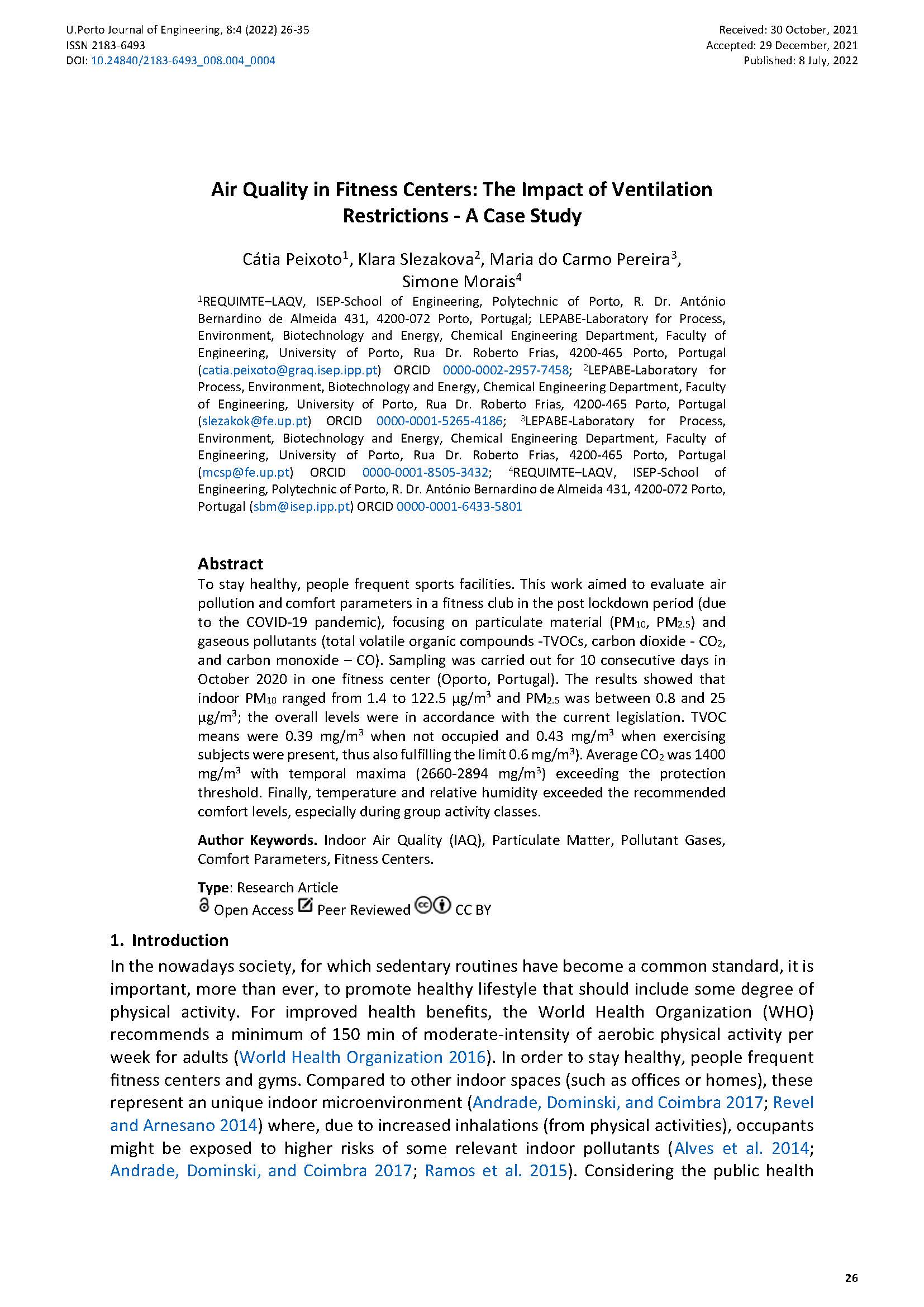Air Quality in Fitness Centers The Impact of Ventilation Restrictions - A Case Study
Main Article Content
Abstract
To stay healthy, people frequent sports facilities. This work aimed to evaluate air pollution and comfort parameters in a fitness club in the post lockdown period (due to the COVID-19 pandemic), focusing on particulate material (PM10, PM2.5) and gaseous pollutants (total volatile organic compounds -TVOCs, carbon dioxide - CO2, and carbon monoxide – CO). Sampling was carried out for 10 consecutive days in October 2020 in one fitness center (Oporto, Portugal). The results showed that indoor PM10 ranged from 1.4 to 122.5 µg/m3 and PM2.5 was between 0.8 and 25 µg/m3; the overall levels were in accordance with the current legislation. TVOC means were 0.39 mg/m3 when not occupied and 0.43 mg/m3 when exercising subjects were present, thus also fulfilling the limit 0.6 mg/m3). Average CO2 was 1400 mg/m3 with temporal maxima (2660-2894 mg/m3) exceeding the protection threshold. Finally, temperature and relative humidity exceeded the recommended comfort levels, especially during group activity classes.
Downloads
Article Details

This work is licensed under a Creative Commons Attribution 4.0 International License.
Authors who publish with this journal agree to the following terms:
- Authors retain copyright and grant the journal right of first publication with the work simultaneously licensed under a Creative Commons Attribution License that allows others to share the work with an acknowledgement of the work's authorship and initial publication in this journal.
- Authors grant the journal the rights to provide the article in all forms and media so the article can be used on the latest technology even after publication and ensure its long-term preservation.
- Authors are able to enter into separate, additional contractual arrangements for the non-exclusive distribution of the journal's published version of the work (e.g., post it to an institutional repository or publish it in a book), with an acknowledgement of its initial publication in this journal.
- Authors are permitted and encouraged to post their work online (e.g., in institutional repositories or on their website) prior to and during the submission process, as it can lead to productive exchanges, as well as earlier and greater citation of published work (See The Effect of Open Access).

